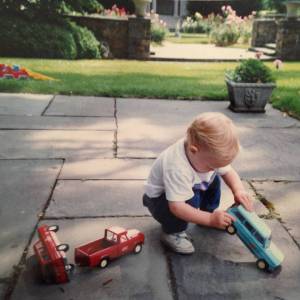For the second time in three months, I'm headed West. This time, the trip is a bit more limited than before, but perhaps more meaningful.
I'm writing from Cody, WY, a town named after William Frederick Cody (you might know him as Buffalo Bill) which serves as the gateway to Yellowstone National Park. I'm not here for the park, which is closed due to the shutdown and the season is a bit late anyway. Instead, I'm here with my housemate Paul, and our goal is a column of limestone and dolomite that thrust through the Wyoming plateau named Heart Mountain.
This is where Paul's maternal grandmother was interned during World War Two, part of a paranoid forced relocation of Japanese Americans on the west coast. Evicted from their homes and forced to live in a horse stable at a racetrack, Paul's family was later placed onto windowless trains and shipped into this corner of the wind-scoured American interior. Today, just a handful of buildings are supposed to remain from the camp, although it is apparently the best preserved of any of the ten "WRA Relocation Centers". More on this tomorrow, we haven't yet seen Wyoming in the daylight.
The trip ranges from the Twin Cities all the way to Cody, retracing half of my journey back from Seattle. I couldn't help narrating parts of the trip; pointing out observations I was unable to share during my solo drive in August, probably depriving Paul of some ability to experience the country himself. Still, there's plenty to think about and discover. This is a patch of land that might be more ignored than any other in the United States. Consider Minenapolis/Saint Paul on one end, Seattle on the other. In between, cities like Spokane, Boise, Missoula, Bozeman, Butte, Billings, Bismarck, Pierre, Sioux Falls, and Rapid City, all with populations pinned between 60,000 and 215,000. Sprinkled across the moonscapes of Idaho, Wyoming, Montana, and the Dakotas there live just over 5 million people. Rocky-Badlandia is missing major airports, tall buildings, celebrities, and NFL teams; essentially all the trappings of modern civilization.
The geologic machinations of the earth are abundantly obvious here. The monotonous pancake of eastern North Dakota starts to undulate west of the Missouri River. Rivers cut seams into the rolling hills like fishing wire. Then the earth begins to offer up wats of red stone, cracked and caked like a failing grade pottery project. The painted rock tosses and turns and stretches out into cliffs and gullies and valleys as you roll though to Montana. To the south of Billings, the ground rises onto the frigid heights of Wyoming. Here rests the eastern flank of the mighty Rockies spine.
Our drive was marred somewhat by the intervention of the world's largest Holstein cow, a fiberglass monolith 38 feet tall and 50 feet wide named Sue. As we flew out of Bismarck, the visage of this beast appeared on the horizon, presiding over a massive front of dark clouds which marshalled at her back. The moment that we crossed the gaze of the cow, we were pelted with rain, which occasionally brought visibility to near zero. Somehow this front managed to last the entire western part of North Dakota (read: the pretty part) and made stopping for pictures or enjoying the scenery a health hazard.
Eventually, the influence of the cow waned at the Montana border and we enjoyed a sunset that under-lit a field of popcorn clouds in the sky. In Billings, we refueled and recharged (and I snapped today's shot) before turning off I94 for the first time in twelve hours and venturing through the darkness across the Wyoming border and through a mountain pass we knew little of until we came down from it. Paul had done good research on accommodations and our first lead was exactly what we needed. After checking in and showering, we headed a half mile down the road to a bar recommended by the motel manager.
It's easy to be cynical about our world. Misunderstanding and acrimony seep out of the TV, ooze from the computer screen, and drip from the printed word. The real world fires good intentions in a kiln and bricks the road to hell. But under a zoo of taxidermied heads, illuminated by electronic signs and neon lights, washed down by a parade of beers, Paul and I found out where earnestness goes to kick up it's heels. This bar had a band and a dance floor owned locals in jeans, boots, and cowboy hats having fun that seemed purely untroubled by any worries of authenticity or shtick or being seen or being not seen. It wasn't just that everyone danced with such evident joy. It was that many were simply incredible dancers. In particular, an old man surely past seventy with a white horseshow mustache and his wife in a low cut black dress , who lit up the floor on every number, slow or fast, old or new. They led, everyone followed seamlessly, one day perhaps destined to be as skilled as the couple who seemed to be re-defining dance, love and marriage all at once.
You couldn't have ended the evening with a bigger smile.
- 0
- 1
- Canon EOS 50D
- 1/100
- f/5.6
- 28mm
- 1600

Comments
Sign in or get an account to comment.


